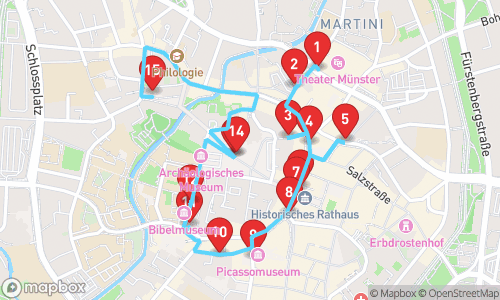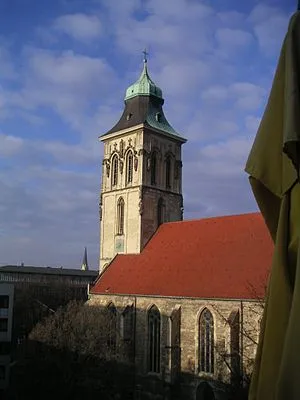
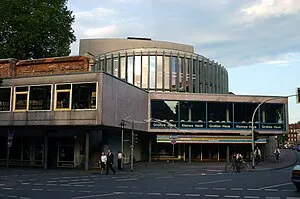
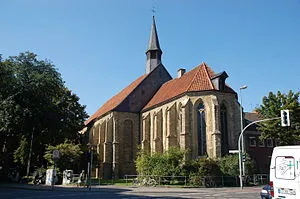
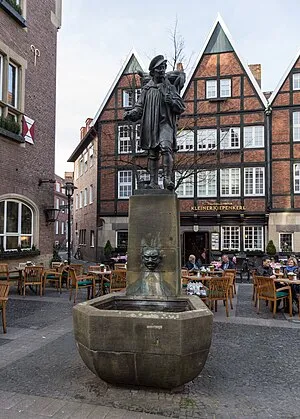
Münster: Een Reis Door Tijd en Traditie met Hans
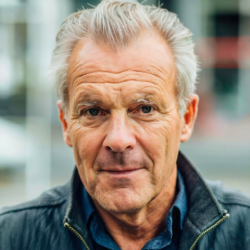
Tour Guide
Hans De Hengel
Welcome to Münster! On this GPS guided audio tour, we will visit 17 stops on a route of 2.89km. This tour focusses mainly on general tourism.
Locatello is an app where you can generate personal audio guided tours. Set your preferred distance, guide, language and theme, and a guided tour is created on the spot.
Walking Time
Distance
stops
Language
Tour Stops

St. Martini (Münster)
St. Martini is a church building in Münster, early references dating back to 1187 and 1199.

Theater Münster
A municipal theatre in Germany, Theater Münster is a building that holds performances of plays, music theatre, and concerts, integrating ruins of a former theatre and music school destroyed in World War II.

Apostelkirche (Münster)
A historic church building, the Apostelkirche is the main Evangelical church in Münster, constructed in the 13th century as a Franciscan monastery church. This Gothic Hall Church features a unique blend of medieval and Renaissance architectural styles.

Kiepenkerldenkmal
A bronze statue depicting a wandering trader from Münsterland with a typical outfit and cart, created in 1896 by August Schmiemann.
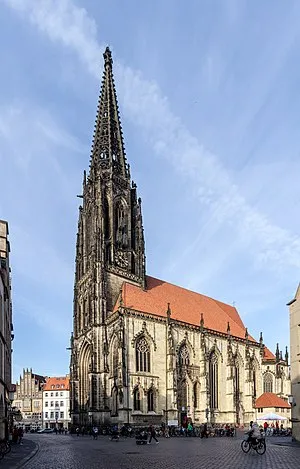
St. Lamberti (Münster)
A Roman Catholic church building in Westphalia, Germany, dedicated to Lambert of Maastricht, known for its architecture blending late Gothic and neo-Gothic styles, featuring three iron baskets hanging from the tower where the corpses of Jan van Leiden and other Münster Rebellion leaders were publicly displayed.
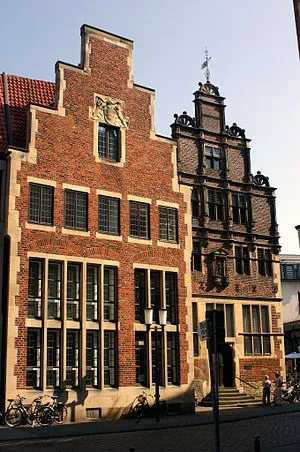
Krameramtshaus
A historic Krameramtshaus, existing since 1589, once served as a gathering place and storage facility for the Kramer Guild and also housed the Dutch delegation during the Westphalian Peace Treaty negotiations in 1648.
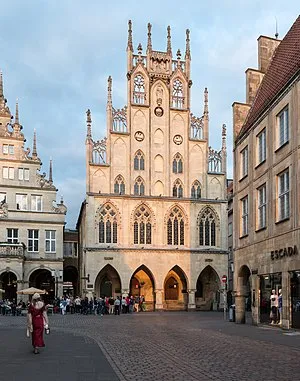
Historical Town Hall of Münster
A historic landmark in Münster, the Rathaus Münster is a well-known Gothic-style town hall with over 120,000 visitors annually.
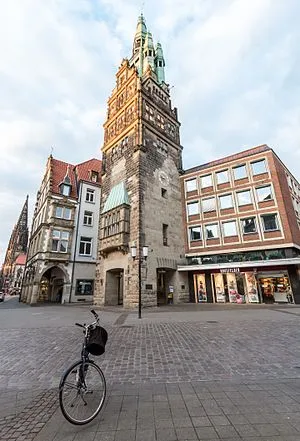
Townhouse tower in Münster
A townhouse tower that is the remaining part of the former town hall, built in the Neorenaissance style between 1902 and 1907. The tower has survived almost unscathed during World War II and now features a glockenspiel that plays daily and during specific seasons.
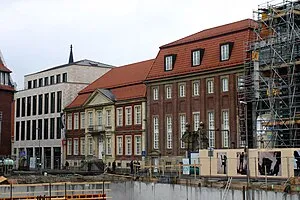
Kunstmuseum Pablo Picasso Münster
A museum dedicated to the artwork of Pablo Picasso, featuring an extensive collection of his graphic works, including lithographs, linocuts, and ceramics, as well as pieces by other prominent artists, such as Georges Braque and Henri Matisse.
Audio Preview
30 sec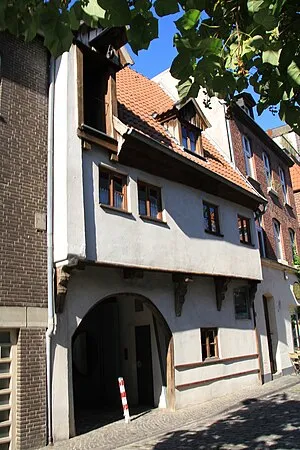
Lütke Gasse 17
A timber-framed house dating back to 1564, verified through dendrological investigations. It is the second oldest surviving half-timbered house in Münster's city center.
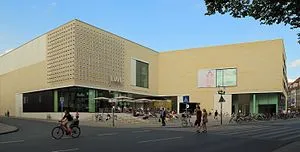
Westphalian State Museum of Art and Cultural History
A museum showcasing Westphalian art and cultural history, featuring late Gothic paintings and sculptures, Cranach family works, and Der Blaue Reiter and Die Brücke movement pieces, including August Macke's works.
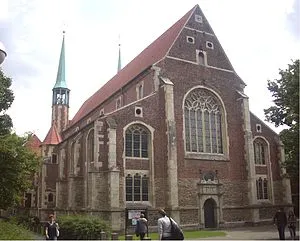
St. Petri (Münster)
A Jesuit church, built between 1590 and 1597 as the church of the Münsterschen Jesuitenkollegs, featuring a rein mechanische Schleifladen-Instrument organ.
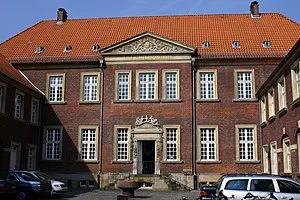
Landsbergische Kurie
A baroque Adelspalais, built from 1702 to 1707, features a strict symmetrical design with a central Wohung and two side wings, housing a museum, offices, and a lecture hall, including the oldest existing university lecture hall.
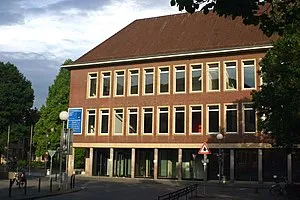
Archaeological Museum of the University of Münster
A archaeological museum specializing in the Greek Antiquity, featuring a collection of ancient works, including sculptures, vases, coins, and models of ancient sites, also showcasing research methods and findings.
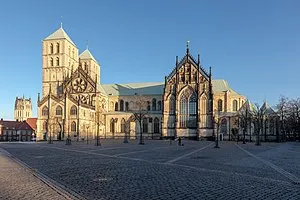
St.-Paulus-Dom
A cathedral with a rich history, the St.-Paulus-Dom is the third church on the site, built between 1225 and 1264 and featuring fragments of the second Ottonian cathedral incorporated into its architecture.
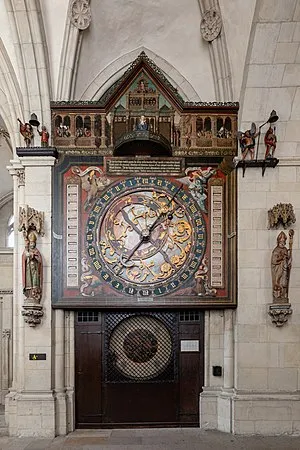
Astronomische Uhr, Paulusdom, Münster
Astronomical clock, created between 1540 and 1542, is one of the most significant monumental clocks in the German-speaking world, featuring a perpetual calendar with dates from 1540 to 2071, an astrolabe with Moon phases and planetary locations, and an intricate display of celestial movements.

Evangelische Universitätskirche Münster
A Baroque church building in Münster, formerly the Klosterkirche of the Franziskaner-Observanten, and currently the Evangelische Universitätskirche and Konzertkirche of the Evangelisch-theologischen Fakultät of the University of Münster.
Download App
Experience this tour and many more with our mobile app. Available for iOS and Android.
Audio Preview
Tour Map
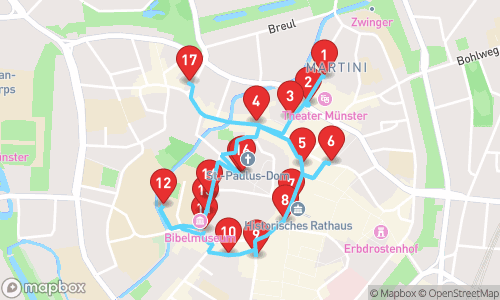
Quick Facts
- ✓GPS-guided navigation
- ✓Professional audio narration
- ✓Offline maps available
- ✓Premium content included
Why Choose This Tour
Expert Local Guide
Narrated by Jenny Multilingual, specializing in general tourism
Flexible Timing
Take the tour at your own pace, any time of day

